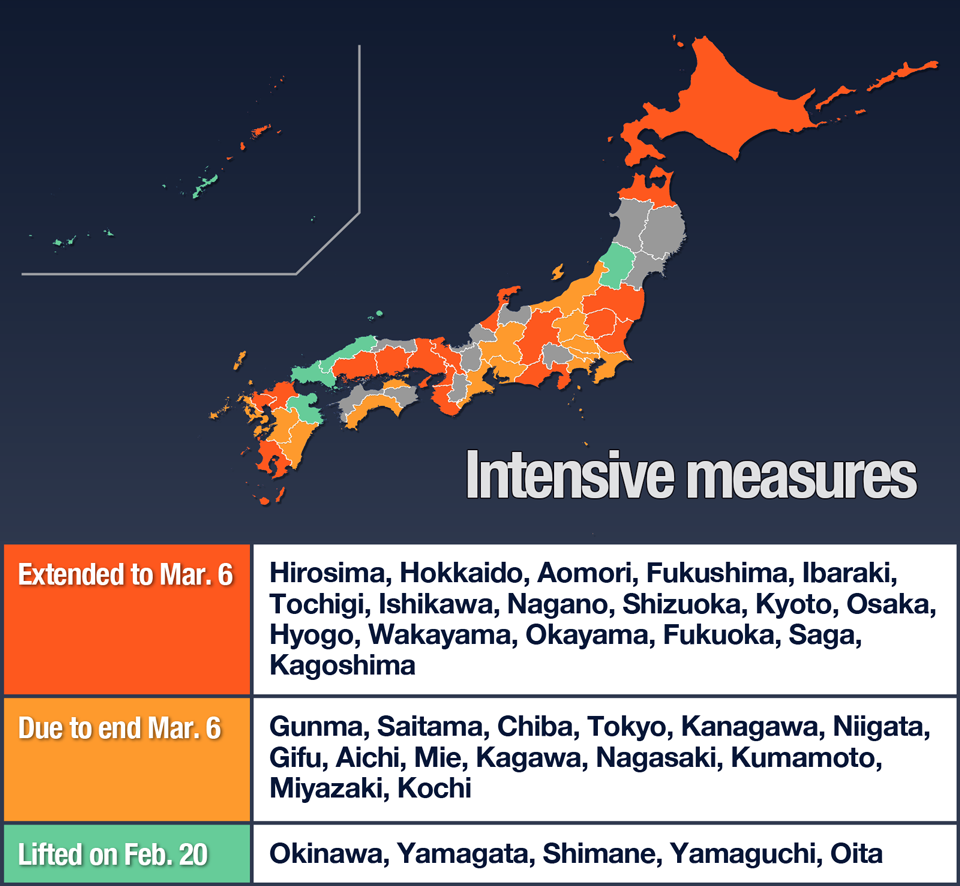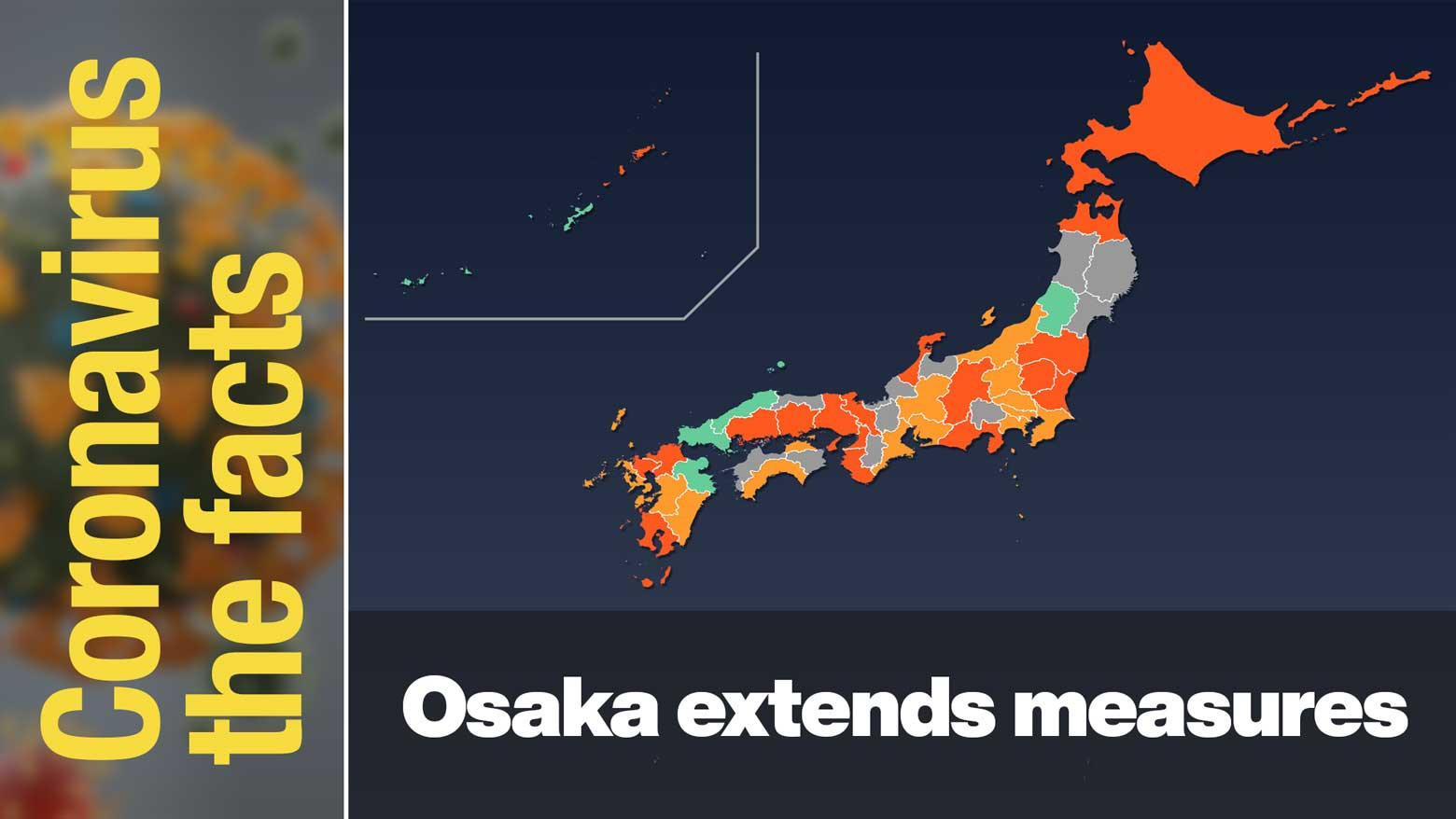This is our series on key coronavirus-related information. Click here to read other installments: #Coronavirus the facts. Find the latest information and answers from experts on everything COVID-19.
Status of restrictions

Authorities have extended infection control measures for Osaka and 15 other prefectures. They were due to expire on February 20, but will now run through March 6. In Wakayama, measures that were due to expire on February 27 will also run through March 6.
Okinawa and four more prefectures lifted restrictions as planned on February 20. The situation in those areas is improving with declining case numbers and easing demand on medical systems.
Out of Japan's 47 prefectures, 31 remain subject to what authorities call "quasi-emergency measures".
While new infections are falling in Osaka, case numbers remain high. Authorities are concerned that the number of seriously ill patients could spike and put a strain on the medical system.
*For more information about specific measures in Osaka and other prefectures: https://www3.nhk.or.jp/nhkworld/en/news/backstories/1876/
Omicron takes a toll on the elderly
The head of the government's coronavirus expert panel, Omi Shigeru, says the biggest current challenge is the increasing number of infections among the elderly, many of whom require hospitalization.
On February 17, Japan reported 270 deaths, a daily record. Since last month, about 90 percent of fatalities have been people aged 70 and older.
Osaka has highest infection rate
The expert panel's recent meeting discussed the infection rate among the elderly in Osaka. It is the highest in the nation, and is leading to more deaths than in other prefectures.
As of February 17, Osaka's hospital bed occupancy rate for mild and moderate coronavirus patients was 83 percent, and for seriously ill patients, 56 percent. Comparable figures for Tokyo stood at 59 percent and 48 percent.
Professor Katsuda Yoshiaki, an infectious disease expert at Kansai University of Social Welfare, says the spread among old people with a high risk of severe illness, plus the burden being placed on the medical system, is contributing to the climbing death rate in Osaka. He also refers to data that shows there are more multigeneration households in the prefecture compared with Tokyo. That means infections can easily spread from young people to their elderly relatives. Cluster infections in elderly care facilities are a continuing concern.
Medical services face critical test
Tokyo Medical University Hospital Professor Hamada Atsuo says although the current wave of infections appears to have peaked, the decline in new cases is slow. He is concerned that a likely uptick in the number of severely ill patients and deaths could be a critical test for medical services in the days ahead.
This information is accurate as of February 21, 2022.
